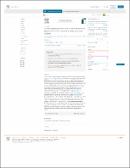| dc.description.abstract | Cardiorespiratory fitness (CRF) is a modifiable risk factor for cardiovascular disease and premature mortality. CRF levels and moderators among people living with HIV (PLWH) are unknown. The aim of the current meta-analysis was to (1) determine mean CRF in PLWH and compare levels with age- and gender-matched healthy controls (HCs), (2) explore moderators of CRF, (3) and (4) explore moderators of CRF outcomes following physical activity (PA) interventions. Major electronic databases were searched systematically for articles reporting CRF expressed as maximum or peak oxygen uptake (ml/min/kg) in PLWH. A random effects meta-analysis calculating the pooled mean CRF including subgroup- and meta-regression analyses was undertaken. Across 21 eligible studies, the CRF level was 26.4 ml/kg/min (95% CI = 24.6 to 28.1) (n = 1010; mean age = 41 years). There were insufficient data to compare CRF levels with HCs. A higher body mass index (β = − 0.99, 95% CI = − 1.93 to − 0.06, P = 0.04), older age (β = − 0.31, 95% CI = − 0.58 to − 0.04, P = 0.02) and the presence of lipodystrophy (β = − 4.63, 95% CI = − 7.88 to − 1.39, P = 0.005) were significant moderators of lower CRF levels. Higher CD4 + counts (β = 0.004, 95% CI = 0.0007 to 0.007, P = 0.016), supervised interventions (P < 0.001) and interventions with a lower frequency of weekly sessions (2 or 3 versus 4 times) (P < 0.001) predicted a better CRF-outcome following PA. CRF levels of PLWH are among the lowest in comparison to other vulnerable populations. More research on the most optimal physical activity intervention characteristics is needed. | en_US |

